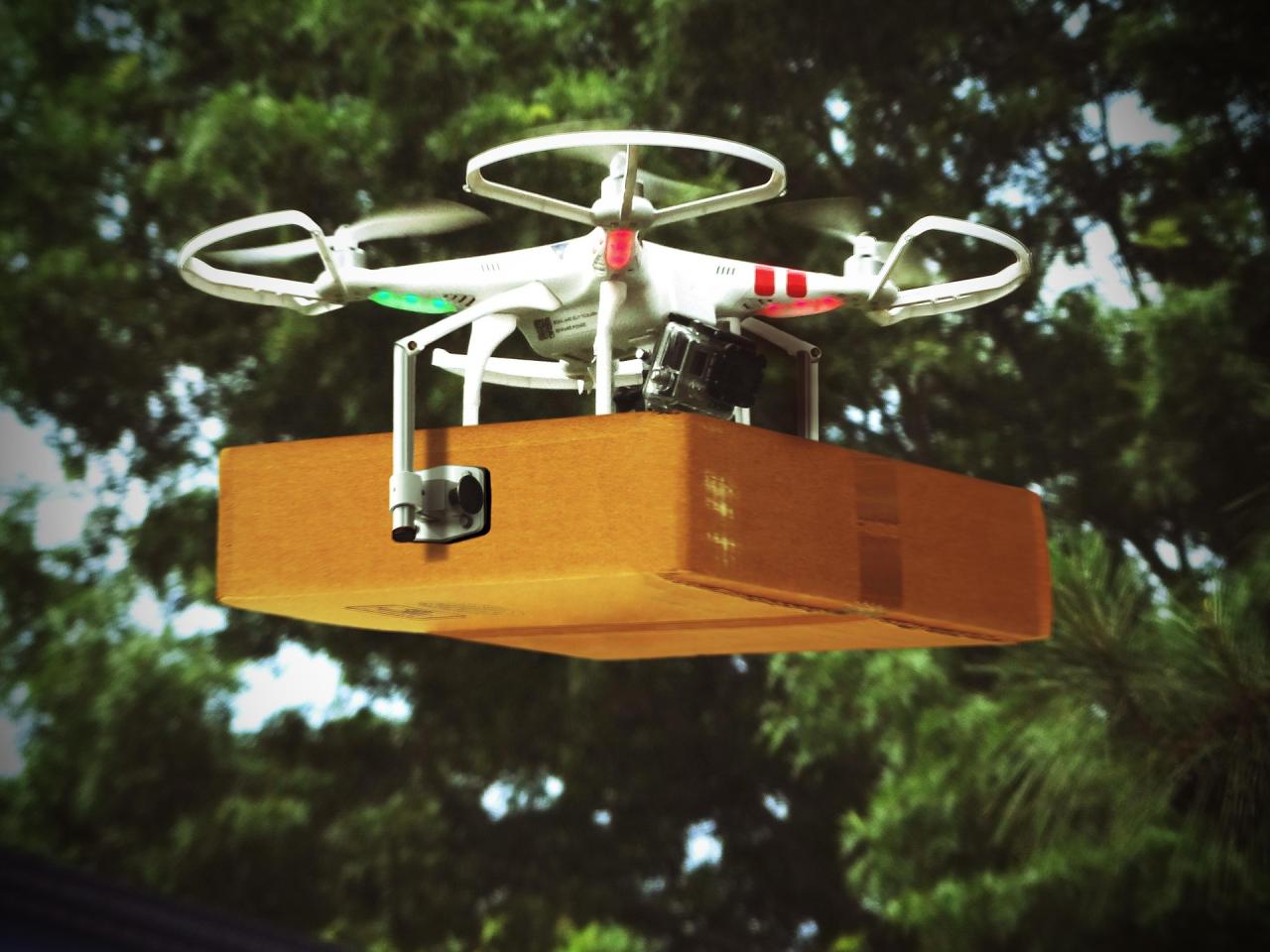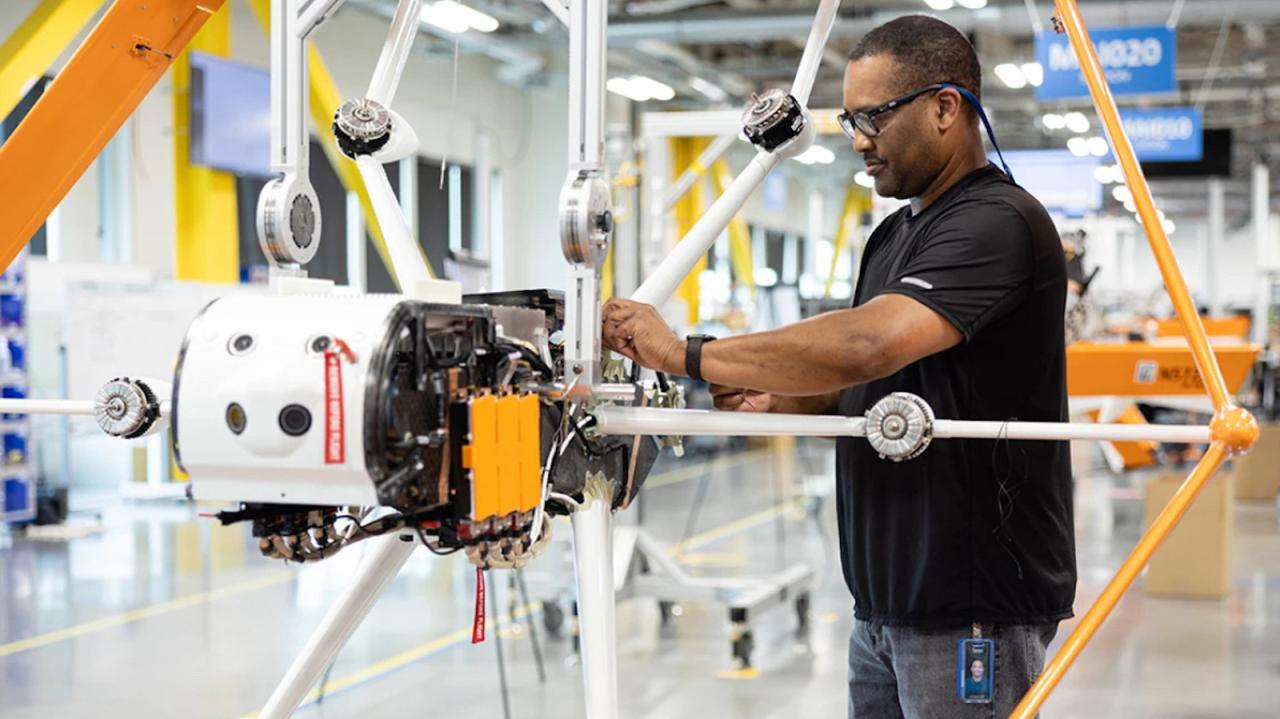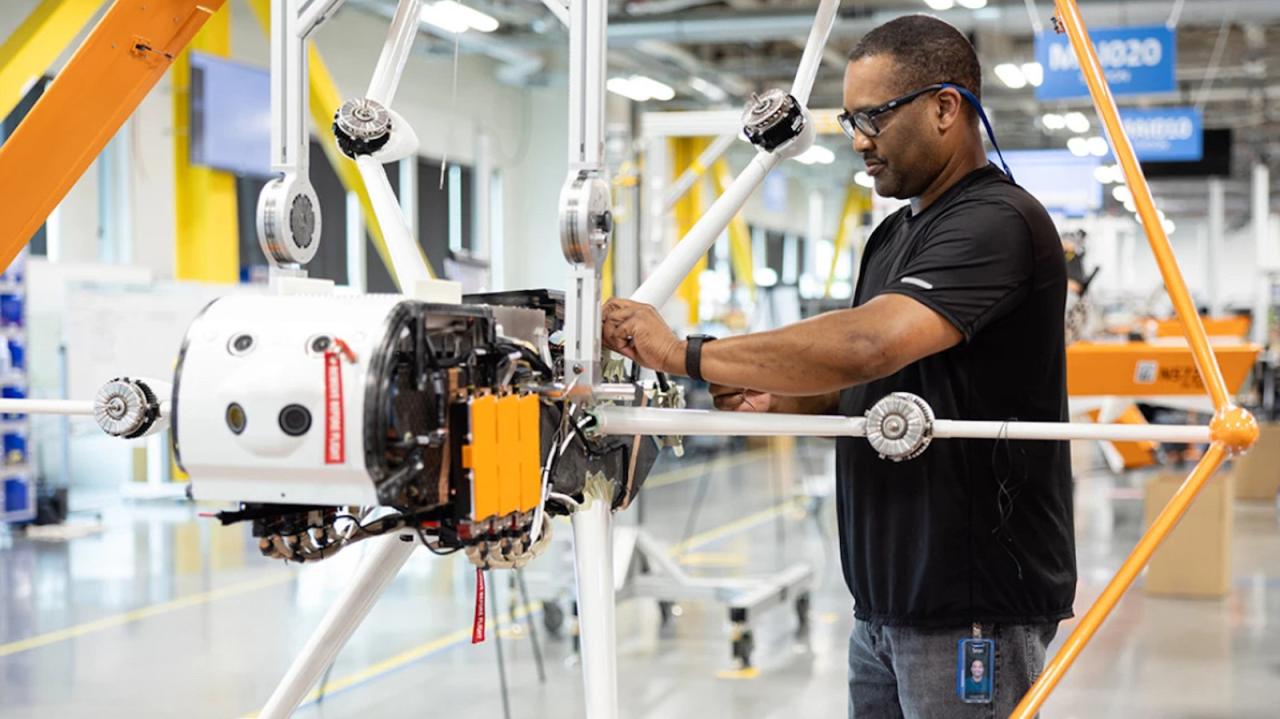Amazon drone delivery locations are rapidly expanding, revolutionizing how we receive packages. This isn’t just about faster delivery; it’s about reimagining logistics, tackling environmental concerns, and pushing the boundaries of technology. We’ll explore the current status, infrastructure needs, regulatory hurdles, customer experiences, and future projections of this exciting development.
From the initial rollout in select areas to ambitious plans for nationwide expansion, Amazon’s drone delivery program presents a fascinating case study in innovation. This exploration delves into the technical challenges, regulatory frameworks, and the evolving customer experience, providing a comprehensive overview of this transformative delivery method.
Amazon’s expanding drone delivery locations are pretty cool, right? But safe operation is key, and recent incidents highlight the importance of this. Check out this article about the orlando drone show accident to see how things can go wrong, even with seemingly well-planned drone operations. Learning from these events helps ensure Amazon’s drone delivery program remains both efficient and safe for everyone.
Amazon Drone Delivery Program: A Comprehensive Overview
Amazon’s drone delivery program, Amazon Prime Air, represents a significant leap forward in last-mile delivery. This program aims to revolutionize package delivery speed and efficiency, utilizing autonomous drones to deliver packages directly to customers’ doorsteps. While still in its relatively early stages, Prime Air offers a glimpse into the future of logistics. This article will delve into the current status, infrastructure requirements, regulatory aspects, customer experience, and future potential of Amazon’s drone delivery locations.
Current Amazon Drone Delivery Program Status

Amazon Prime Air is currently operational in select locations, offering a limited-scale service. The program faces various challenges, including regulatory hurdles, technological limitations, and logistical complexities. However, its ongoing development and expansion demonstrate Amazon’s commitment to this innovative delivery method.
| City | State | Start Date | Notable Features |
|---|---|---|---|
| College Station | Texas | 2022 | Initial deployment; limited package types and delivery zones. |
| Lockeford | California | 2022 | Focus on rural delivery; testing extended range and diverse terrain capabilities. |
| (Add more locations as they become available) | |||
| (Add more locations as they become available) |
Limitations include restricted airspace regulations, weather dependency, and the need for robust infrastructure in each delivery location. The program’s scalability also remains a challenge, requiring significant investment in technology and logistics.
Infrastructure Requirements for Drone Delivery Locations

Establishing and maintaining a functional drone delivery location requires a sophisticated infrastructure. This infrastructure ensures safe and efficient drone operations, from takeoff and landing to package handling and maintenance.
Essential components include designated drone landing pads (often incorporating safety features like obstacle detection and lighting), high-bandwidth communication networks for real-time drone monitoring and control, secure facilities for drone maintenance and charging, and potentially, package sorting and storage areas. Logistical challenges include securing suitable land, obtaining necessary permits, and navigating complex terrain and environmental conditions, especially in rural or remote areas.
Diagram of Infrastructure Interaction: A central control center monitors and manages multiple drones simultaneously. High-bandwidth communication networks connect the drones to the control center, relaying real-time data on location, battery levels, and flight status. Drones take off from designated landing pads, navigate to delivery locations using GPS and other sensors, deliver packages, and return to the landing pads for recharging and maintenance.
Maintenance facilities ensure drones are properly maintained and repaired, maximizing operational uptime.
Regulatory and Legal Aspects of Drone Delivery Locations, Amazon drone delivery locations
Drone delivery operations are subject to a complex web of regulations that vary significantly across jurisdictions. These regulations are designed to ensure safety, security, and privacy. Navigating these regulatory landscapes is crucial for successful drone delivery program implementation.
So you’re curious about where Amazon’s delivering packages with drones? It’s still pretty limited, focusing on specific areas for testing. Think about the scale though – imagine a whole fleet, like the amazing spectacle at the niagara falls drone show , but instead of a show, it’s delivering your stuff. That kind of coordinated movement is what Amazon’s aiming for, but on a much larger, more logistical scale for widespread drone delivery.
- United States: The Federal Aviation Administration (FAA) sets the primary regulations for drone operations, including weight limits, pilot certification requirements, and airspace restrictions. Individual states may also have additional regulations.
- United Kingdom: The Civil Aviation Authority (CAA) oversees drone operations, with similar requirements to the FAA regarding safety, registration, and airspace management.
- Germany: The Luftfahrt-Bundesamt (LBA) regulates drone use, emphasizing safety and privacy concerns, particularly regarding data collection and transmission.
Obtaining necessary permits and approvals typically involves submitting detailed flight plans, demonstrating compliance with safety standards, and potentially undergoing operational assessments. The process can be time-consuming and requires close collaboration with regulatory bodies.
Customer Experience and Impact of Drone Delivery
The customer experience with Amazon drone delivery is designed for seamless integration with existing Amazon services. Customers receive order tracking updates, real-time delivery notifications, and typically a simple, contactless package drop-off at their designated location.
Environmental Impact Comparison:
- Drone Delivery: Lower carbon emissions per delivery compared to traditional methods, particularly for short-distance deliveries. Reduced traffic congestion.
- Traditional Delivery: Higher carbon emissions due to vehicle use. Contributes to traffic congestion and increased road wear.
Customer feedback has been largely positive, with many appreciating the speed and convenience of drone delivery. However, concerns regarding noise levels, package security, and weather-related delays have also been noted. Amazon addresses these concerns through ongoing technological improvements, operational adjustments, and proactive communication with customers.
Future Expansion and Potential of Drone Delivery Locations

Amazon’s drone delivery network is poised for significant expansion over the next 5-10 years. Technological advancements and evolving regulatory landscapes will play crucial roles in shaping this expansion.
Amazon’s expanding drone delivery network is aiming for more locations, but glitches happen. Remember that crazy orlando drone show malfunction ? It highlights the tech challenges involved. So, while Amazon’s aiming for widespread drone delivery, safe and reliable operation remains key to success in all those future locations.
| Geographic Area | Estimated Timeline | Service Improvements | Projected Package Volume Increase |
|---|---|---|---|
| Additional US States (Rural and Suburban Areas) | 2024-2027 | Increased delivery range, improved weather resilience | 20% – 30% |
| Selected International Markets (e.g., Europe, Canada) | 2027-2030 | Adaptation to international regulations, multilingual support | 15% – 25% |
| Urban Centers (with advanced traffic management systems) | 2030+ | Improved route optimization, enhanced safety features for densely populated areas | 35% – 50% |
Technological Advancements:
- Advanced AI for autonomous navigation and obstacle avoidance.
- Improved battery technology for extended flight range and payload capacity.
- Enhanced sensor systems for improved situational awareness and safety.
Factors such as population density, existing infrastructure (including communication networks and suitable landing zones), and supportive urban planning policies will heavily influence the selection of future drone delivery locations. Areas with efficient logistics networks and open spaces for landing zones are likely to be prioritized.
Conclusion: Amazon Drone Delivery Locations
Amazon’s drone delivery program, while still in its relatively early stages, holds immense potential to reshape the future of e-commerce logistics. The ongoing advancements in drone technology, coupled with evolving regulatory landscapes and increasing customer acceptance, point towards a future where drone deliveries become a commonplace occurrence. The journey is filled with challenges, but the rewards – faster, more efficient, and potentially more environmentally friendly deliveries – are worth the effort.
Key Questions Answered
How long does a drone delivery take?
Delivery times vary depending on distance and other factors, but generally aim for 30-minute or less delivery windows.
What types of packages can be delivered by drone?
Currently, drones can handle smaller packages that meet specific weight and size restrictions.
Is drone delivery more expensive than traditional delivery?
Pricing models are still being developed, but Amazon aims to make drone delivery cost-competitive with traditional methods.
What happens if there’s bad weather?
Drone deliveries are weather-dependent. In inclement weather, deliveries are postponed until conditions improve.
